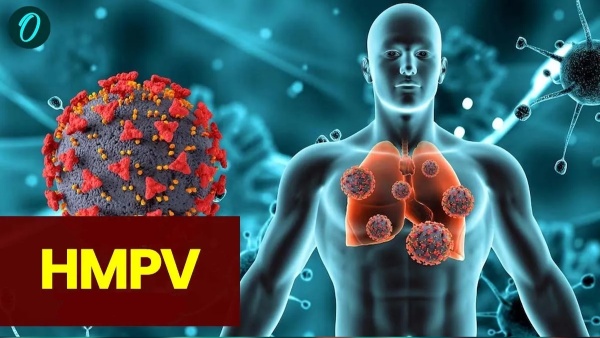China is grappling with a surge in respiratory illnesses, with human metapneumovirus (HMPV) emerging as a significant concern. This new virus is affecting people of all ages, with children and the elderly being particularly vulnerable. Health officials are monitoring the situation closely, as the outbreak has sparked fear of a potential global health crisis.
The Rise of HMPV in China
HMPV, a respiratory virus first identified in 2001, has become a major cause of illness in China this winter. Respiratory infections are not unusual in colder months, but the rise in HMPV cases has triggered alarm. According to reports, hospitals are overwhelmed with patients, and several respiratory diseases, including HMPV, Influenza A, and Mycoplasma pneumoniae, are circulating simultaneously.
The World Health Organization (WHO) has yet to issue any formal advisories or declare an emergency. However, neighboring countries are closely monitoring the situation. Despite online rumors of a widespread epidemic, there is no official confirmation that the outbreak has reached pandemic levels.
The Threat of HMPV
HMPV causes flu-like symptoms, such as fever, cough, nasal congestion, and shortness of breath. Severe cases can lead to complications like pneumonia or bronchitis. Although no vaccine is available, health experts stress the importance of preventive measures to curb the spread of the virus.
The rise in HMPV infections has been attributed to several factors, including the cold weather and the resumption of normal life after COVID-19 lockdowns. For years, strict measures kept many viruses at bay, leading to a catch-up period where people, especially children, are re-exposed to pathogens.
Impact on Children and Vulnerable Groups
Young children and older adults are particularly at risk from HMPV. Children’s immune systems are still developing, making them more susceptible to severe respiratory infections. Similarly, the elderly, especially those with underlying health conditions, face a higher risk of complications. Hospitals, particularly children’s hospitals, are reporting a rise in pneumonia cases and “white lung” infections, which require urgent attention.
HMPV spreads easily through respiratory droplets when an infected person coughs or sneezes. Close personal contact and touching contaminated surfaces also contribute to its transmission. This makes crowded places, such as hospitals and schools, high-risk zones.
Preventive Measures and Global Concerns
Although the situation in China is being monitored, no major international alarms have been raised. However, the rapid spread of multiple viruses has raised questions about preparedness for a potential global health threat. Countries in Asia, particularly China’s neighbors, are on high alert and have implemented strict monitoring measures.
There is currently no specific treatment for HMPV, making prevention crucial. Health experts recommend regular hand washing, wearing masks in crowded areas, and avoiding contact with sick individuals to reduce the risk of infection. Hospitals are advising people to stay home when sick to prevent spreading the virus.
The rise of HMPV in China serves as a reminder of the importance of global health vigilance. While the situation has not reached pandemic levels, the spread of respiratory viruses underscores the need for effective public health monitoring and preventive measures. The world must remain cautious and prepared as respiratory illnesses continue to affect communities worldwide.
Related Stories:
Chikungunya surge in Pakistan: What we know about the mosquito-borne virus
Mpox Reaches Pakistan and Sweden: 2024 Outbreak and Measures
















